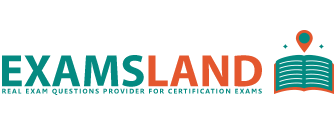Free Facebook Certified Marketing Science Professional 200-101 Exam Practice Test
200-101 Exam Features
In Just $59 You can Access
- All Official Question Types
- Interactive Web-Based Practice Test Software
- No Installation or 3rd Party Software Required
- Customize your practice sessions (Free Demo)
- 24/7 Customer Support
Total Questions: 60
-
An advertiser recently ran a month-long campaign on a new media platform. This campaign targeted customers who had purchased from the advertiser in the past year. Of the 10 million customers targeted, 3 million were reached. The average frequency for the campaign was three impressions over the month. The advertiser spent $100,000 on this media buy.After the campaign, an analyst from the media platform noticed that customers who received six or more impressions were twice as likely to purchase than those who received three or fewer impressions. To increase the number of users who receive six or more impressions, the analyst recommends that the advertiser double their spend. The goal is to increase the frequency from three to six in order to drive a significant increase in incremental return on ad spend.What primary concern should the advertiser's in-house measurement team have about this conclusion?
Answer: C Next Question -
An advertiser wants to know whether campaign strategy A had significantly different performance than campaign strategy B in terms of additional sales. The campaigns both ran at the same time against mutually exclusive portions of the advertiser's customer base.What is the null hypothesis of the test design?
Answer: C Next Question -
An ecommerce brand needs to determine if additional placements will drive more results than focusing the budget primarily on Facebook Feed.A/B test results:Campaign 1: Facebook FeedCost per purchase: S5Campaign 2: Four placementsCost per purchase: S3Facebook News Feed cost per purchase: $1.50Instagram feed cost per purchase: $2.50Messenger cost per purchase: $6Instagram Stories cost per purchase: $7 Which action should the brand take?
Answer: C Next Question -
A newly launched costume brand advertising heavily on Google search has recently allocated 5% of its budget to Facebook ads. Its costumes sell for S45 or less. The brand ran an account level Conversion Lift to measure the proportion of sales generated by Facebook.To reduce negative business impact, it chooses to run the test during its off-peak season. The test ran for two weeks, with a campaign budget of S5,000. From the internal sales data, it sees that a total of 70 purchases were made during the test period.The results:Lift in view content: 27%Lift in add to cart: 15%Lift in purchases: Flat / No results availableCost per incremental add to cart: S56What two conclusions could the advertiser draw based on the results? (Choose 2)
Answer: A Next Question -
An advertiser obtains a p-value of 0.20 after a matched pairs multi-cell experiment. The objective was to measure whether advertising strategy A generated more incremental business outcomes than advertising strategy B. The test had high statistical power probability, and the result was not a false negative.What could the advertiser conclude?
Answer: C Next Question -
A travel company wants to know if it gets additional conversions by relying only on its direct response strategies, as opposed to combining each strategy with branding campaigns. The company continuously keeps track of each strategy's performance, but it measures them separately. Also, each strategy's measurement has its own KPI. These are the latest results:Branding campaigns:A benchmark of 35 Brand Lift tests, SI.70 USD per additional ad recallerAn average of 125 conversions per campaignDirect response campaigns:; A benchmark of 20 Lift tests, $2.50 USD per Conversion Lift - An average of 370 conversions per campaignWhat should the company do to test if it gets more incremental conversions from relying only on direct response strategies?
Answer: C Next Question -
An analyst has calculated an average lift from a random sample of 300 similarly sized campaigns. The analysis showed the following:Minimum lift is 98Maximum lift is 17795% confidence interval for the average lift per campaign is (133, 145)Average p-value for each individual campaign's lift is p = 0.03 What should the analyst conclude about the distribution of lifts?
Answer: B Next Question -
An advertiser is reviewing campaign results in Facebook Attribution and determines that optimizing its campaigns for website content views appears to be more successful than optimizing for clicks.Details reviewed were as follows:A last touch attribution model was usedLook back window was 90 daysCampaigns optimized for clicks delivered a cost per view for SO.55Campaigns optimized for website content views yielded a cost per view of S0.49The advertiser wants to assess whether or not this difference is meaningful or due to random chance before adjusting its strategy accordingly. What action could the analyst take to determine if the difference is meaningful?
Answer: A Next Question -
A startup ecommerce company is beginning to run media campaigns to increase sales. It is having trouble taking action from its media campaigns because of the high number of KPIs it is considering when analyzing results.The startup company has been in the growth phase, so the focus has been on increasing the number of people who see ads for their products on Facebook. As the company grows, the focus is shifting towards generating sales. For its Facebook campaigns, the business is considering incremental purchases, incremental reach, CPMs, website visits, clicks and impressions.Which metric should be prioritized to support the company's new Facebook marketing strategy?
Answer: D Next Question -
A longitudinal data set is missing values.Which approach should be used to minimize bias in a forecast considering it is a small sample?
Answer: A Next Question
Total Questions: 60
